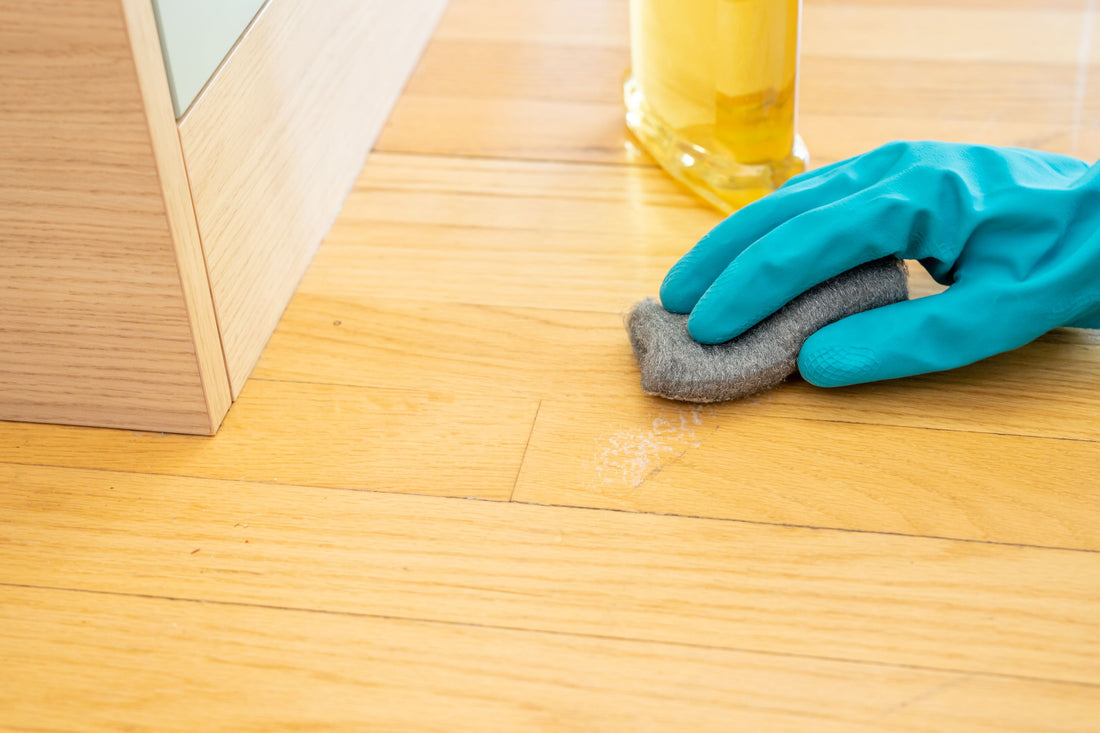Wooden floors add timeless beauty and warmth to any home. However, maintaining their appearance and longevity requires proper care and cleaning. Many homeowners wonder how do I clean wood floors effectively without damaging the finish. This comprehensive guide explains everything you need to know about cleaning floorboards safely and efficiently, including tips on mopping floorboards, choosing the best wooden floor cleaner, and ongoing maintenance strategies for flawless wood floor cleaning.
Understanding Wooden Floors and Why Cleaning Matters
Wooden floors are typically made of hardwood or engineered wood. Both types feature a durable surface that enhances your home's aesthetic appeal but are vulnerable to moisture, scratches, and dirt buildup if not cleaned correctly. Unlike tile or vinyl, wooden floorboards can absorb water, leading to swelling, warping, or discoloration.
Cleaning wooden floors properly helps preserve their finish, prevents damage, and ensures the natural wood grain remains vibrant. Incorrect cleaning methods, such as using excessive water or harsh chemicals, can strip away protective layers and shorten the lifespan of your floorboards.
How Do I Clean Wood Floors? The Basics
The foundation of effective wood floor cleaning lies in routine care and using appropriate products and tools. Here’s the best way to clean wooden floors step by step:
1. Regular Dusting and Sweeping
Before mopping floorboards or applying any cleaner, remove dust, dirt, pet hair, and grit. Use a soft broom or microfiber dust mop, which gently lifts debris without scratching the wood. This step prevents dirt from being ground into the finish during wet cleaning.
2. Vacuuming for Thorough Cleaning
Vacuum your wood floors weekly using a vacuum cleaner equipped with a hardwood floor attachment or a brush roll designed for hard surfaces. This removes dust particles that can scratch the surface and eliminates dirt in corners or along edges where sweeping may miss.
3. Selecting the Right Wooden Floor Cleaner
Choosing the appropriate cleaner is critical. Avoid abrasive, alkaline, or oil-based cleaners that can damage the wood’s protective finish. Look for products labeled specifically as a wooden floor cleaner or formulated for hardwood floors. These are pH-balanced and designed to clean gently while preserving the floor’s protective coatings.
If you prefer DIY solutions, a mixture of diluted white vinegar (about 1 cup per gallon of warm water) is effective for removing grime and sanitizing, but use sparingly since excessive vinegar can dull the finish over time.
4. Proper Mopping Floorboards
Mopping wooden floors requires care to avoid excess moisture. Here’s how to mop floorboards safely:
- Use a microfiber mop or a well-wrung sponge mop to apply the cleaner.
- Wring out the mop thoroughly before use to prevent water pooling on the surface.
- Mop in the direction of the wood grain for the most effective cleaning.
- Avoid using steam mops or soaking the floor, as this can cause water damage or warping.
5. Drying the Floor
After mopping floorboards, it’s important to dry the surface promptly using a clean, dry cloth or towel. This step prevents moisture from penetrating the wood and causing swelling or stains.
Tips for Maintaining Clean Floorboards
To keep your wooden floors looking their best, regular maintenance is just as important as cleaning. Consider these tips:
- Place doormats at entry points to reduce dirt and grit tracked onto floorboards.
- Use felt pads on the legs of furniture to prevent scratches (similar to advice in our door hinge maintenance guide for protecting door hardware).
- Avoid walking on wooden floors with high heels or shoes with abrasive soles.
- Clean spills immediately to prevent stains and water damage.
- Reapply protective finishes as recommended by the floor manufacturer to maintain durability.
Common Mistakes to Avoid When Cleaning Wooden Floors
Many people inadvertently damage their floors by making simple mistakes. Avoid these pitfalls:
- Using harsh chemicals or ammonia-based cleaners.
- Applying excessive water during mopping.
- Using abrasive scrubbers or steel wool.
- Neglecting regular dusting and sweeping.
- Using steam cleaners, which generate heat and moisture that can warp wood.
Recommended Wooden Floor Cleaning Products
There are many options on the market, but some cleaners are especially well suited for wood floor cleaning. Look for:
| Product Type | Description | Best For |
|---|---|---|
| Commercial wooden floor cleaner | Specifically formulated for hardwoods, gentle yet effective | Sealed wood floors |
| Mild vinegar-water solution | DIY natural cleaner, diluted to avoid damage | Routine cleaning on sealed floors |
| pH-neutral soap-based cleaners | Safe for wood, preserves finish | Regular maintenance |
Always test a new cleaner on a small, inconspicuous area before applying it across the entire floor.
How Often Should You Clean Wooden Floors?
The frequency depends on foot traffic and location:
- High traffic areas: Sweep or dust mop daily; mop floorboards weekly.
- Medium traffic: Dust mop 2-3 times per week; mop biweekly.
- Low traffic: Weekly dusting and monthly mopping may suffice.
Regular cleaning prevents dirt buildup, which can scratch and dull the wood finish over time.
How Do I Clean Wood Floors After Renovation or Heavy Soiling?
After renovations or if your floors are heavily soiled, follow these steps:
- Begin with a thorough vacuum and dust mop to remove dust and debris.
- Use a stronger wooden floor cleaner or diluted detergent solution for spot cleaning.
- Avoid excessive water and rinse the floor with a damp mop to remove residues.
- Consider professional polishing or refinishing if the floor finish is damaged.
If you are also considering upgrading your home’s interior doors, check out our guide on white internal doors home upgrade for stylish door ideas that complement your wooden floors.
Eco-Friendly Approaches to Wood Floor Cleaning
For environmentally conscious homeowners, natural solutions and minimal chemical use are appealing. Options include:
- Diluted white vinegar and water mix.
- Castile soap diluted in warm water.
- Essential oils like lemon or tea tree oil added sparingly for fragrance and antibacterial properties.
Always ensure floors are sealed and protected before using any home remedy to avoid damage.
Final Thoughts: The Best Way to Clean Wooden Floors
Effective wood floor cleaning balances gentle care with thorough dirt removal. Start with regular dusting or sweeping, select the right wooden floor cleaner, and mop floorboards carefully to avoid excess moisture. Dry floors promptly and maintain protective measures like furniture pads and doormats. By following these guidelines, your wooden floors will remain beautiful and durable for years to come.
For more tips on maintaining your home’s wood and door hardware, explore our Manhattan hardware guide or learn about how to choose the right door hinge for different types of doors to ensure all your fittings are as well cared for as your floors.
If you want help with installation or looking for accessories, you might also find our door handle packs guide useful for choosing stylish and durable handles that match your wooden doors and flooring aesthetic.





